
14 minute read
Caroline Morgan Clowes (1838-1904
Recovering the Paintings and Legacy of a Great American Artist: Caroline Morgan Clowes (1838-1904)
by Bill Jeffway
Through the extraordinary Caroline Morgan Clowes Collection, with its dozens of paintings, hundreds of sketches, photographs, and daguerreotypes, and thousands of pages from letters, diaries, event programs, and newspaper clippings, we are afforded a rare and personal insight into a woman born 182 years ago. In addition to the beauty and accomplishment reflected in Clowes’ work, we find a personal story of a woman’s persistence in a male-dominated field that resonates today.
Figure 1. Caroline M. Clowes, Buckskin, n.d. Oil on board. The Dutchess County Historical Society, The Caroline M. Clowes Collection, Gift of Linda and E. Stuart Hubbard, 2019. Buckskin was the horse that Caroline’s cousin Ambrose Hart brought back from the South upon his return from the Civil War. The date of this work, therefore, would probably fall early in Miss Clowes’ career, c. 1865-70. This, like all the Clowes works pictured in this article, come from the family home, “Heartsease” in La Grange, where they were created and where they were stored until donation to the Dutchess County Historical Society. Of the large number of works from this location—including paintings, drawings, diaries, and letters— a small proportion were dated or signed.
The general public will again be introduced to the work and life of one of America’s greatest nineteenth-century painters, a specialist in animals and landscape. A display of Caroline M. Clowes’ paintings and drawings, planned for exhibit at the Barrett House in Poughkeepsie, New York in September 2020 (baring any issues related to the pandemic, unknown as we go to press), will be available online. The exhibit, “Caroline Morgan Clowes (1838-1904): An Important Nineteenth-Century American Animal Painter,” will be drawn from a generous gift of paintings, drawings, and archives (The Caroline Morgan Clowes Collection, from Linda and E. Stuart Hubbard to the Dutchess County Historical Society in 2019). It will present Miss Clowes’ story again for the first time in over one hundred years. During her life, Miss Clowes became an accomplished painter, working in the wake of the Hudson River School artists, creating a reputation for herself as a virtuoso painter of animals and landscapes (Figures 1 and 2). She lived and worked at a large family home, “Heartsease,” in LaGrange, here in Dutchess County. Miss Clowes was also closely associated with a number of members of the new institution of education for women, Vassar College—among them: Frederick Rondel, a painter connected to college founder Matthew Vassar and Henry Van Ingen, head of the Art Department. Even though she spent her entire life in Dutchess County, she exhibited widely—and with the finest male painters of her day.
In her purse, with some coins, Caroline carried a newspaper clipping.1 It is a letter to the editor from January 22, 1881. The letter is written by a woman who pushed back hard on a recent talk entitled “A Model Wife,” given by a man who argued that a woman’s role was to be submissive to her husband. Underlined in pencil, presumably by Caroline, is the sentence reading, “if we've learned anything this century, it is that a woman deserves the place that she creates.” In a letter to her sister while still a teenager, Caroline declared she was wedded to her easel.2 It seems she had decided early on that a man would not be directing her future.
Childhood of Caroline M. Clowes
Caroline was two years old and living in Neversink Bridge, Sullivan County, when her mother died Christmas Eve, 1840.3 Her infant sister died a few months later. Caroline and her sister Lydia, who was two years older, were raised by their single-parent father until Caroline was 13. William J. Clowes was trying to make a living managing lands in Orange and Sullivan County he had obtained through tenuous rights based on his ancestor Gerhardus Clowes, who was Orange County Clerk in the 1720s and a land conveyor. He sarcastically referred to land near the Minisink Patent as the
.~• J l ' "'
Figure 2. Caroline M. Clowes, Autumn Landscape, n.d. Oil on board. The Dutchess County Historical Society, The Caroline M. Clowes Collection, Gift of Linda and E. Stuart Hubbard, 2019.

“Moneysink Patent.”4 Equally unsuccessful financially, having invested in a printing press and publishing monographs on the topic,5 he promoted a theory that numeric patterns in the Bible needed to be understood as they could bridge the gap between Biblical claims and scientific discovery. While he described God as the inventor and source of the “Apographean Numbers,” he described himself, and offered himself as an “agent to the world” for their interpretation.6
Young Caroline Moves to Heartsease in LaGrange
In 1851, at age 13, Caroline was moved to the LaGrange home of her late mother’s younger brother, Benjamin Hall Hart and his wife, Elizabeth (nee Nichols), whom she called “Aunt Elizabeth.” Benjamin and Elizabeth Hart had seven children of their own. Lydia was relocated to Virginia, to the family of her late mother’s older brother, William Henry Hart. William’s daughter Elizabeth raised Lydia in Virginia with her husband, the Rev. Reuben Lindsay Coleman.
At this time, Dutchess County and Poughkeepsie were progressive when it came to the education of “young ladies.” Among the more prominent
co-educational schools were the Methodist Amenia Seminary and the Quaker Nine Partners Boarding School. Lucretia Coffin Mott, one of the five organizers of the 1848 Seneca Falls Convention on women’s rights, was both a student and a teacher at the Nine Partners School. Poughkeepsie had four girls’ schools at the time7, Cook’s Collegiate Institute, Miss Lydia Booth’s Female Seminary, Cottage Hill, and the Poughkeepsie Female Academy that Caroline attended. Poughkeepsie was already referred to as the “City of Schools” when Matthew Vassar opened the “Vassar Female College” in 1865.
Benjamin and Elizabeth Hart raised Caroline with seven of their own children at the LaGrange farm they called “Heartsease.” Home to what grew into an international apple business over three generations, they created a culture that was ambitious in business, art, and society, but compassionate, humble, and nurturing. Also living at Heartsease was Elizabeth Hart’s mother, Elizabeth (1780-1858) and her sister, Louisa Adelia Nichols (1818-1892), whom Caroline called “Miss Nichols.”8 Miss Nichols had a vital role in the education of her young relative. A skilled artist herself, Louisa Nichols gave Caroline a gift of five drawing books for Christmas of 1851. Caroline wrote to her sister of the gift, “I hope I shall soon learn to draw well...”9
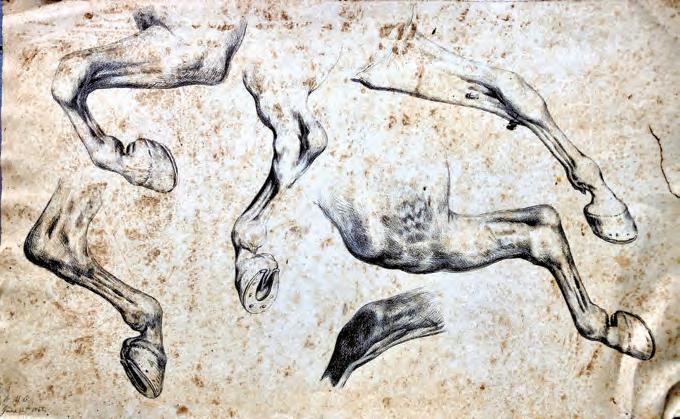
Figure 3. Caroline M. Clowes, Drawing of horses’ legs. Signed and dated: “CMC June 12th 1862.” Pencil sketch. The Dutchess County Historical Society, The Caroline M. Clowes Collection, Gift of Linda and E. Stuart Hubbard, 2019.
May 2, 1853, when Caroline was 15, her sister Lydia mentioned the “improvement in [Caroline’s] drawing.” In the same letter, Caroline’s “Aunt Lizzie” wrote noting that Caroline’s mother was talented in painting or drawing, “I hope you will equal your dear mother in the beautiful art of which you are so fond…”10
In 1854, Caroline’s drawings were featured in an unnamed exhibition (Figure 3).11 In 1856, at the end of what may have been a brief hiatus, Lydia wrote, “I am glad you are again hoping to take up your drawing and painting…”12 In 1859, Lydia described Caroline as walking on school days from Heartsease to Poughkeepsie Female Academy on Cannon Street, a 45-minute walk each way. She mentions Caroline’s taking art and drawing lessons from “Miss Dudgeon.” In April of 1859, Caroline went to New York City with pictures. There is specific reference to “oils” and “larger pieces” in what may have been the first city trip with this purpose.
Two Important Men: Frederick Rondel and Henry Van Ingen
If the majority of instruction and support of the 1850s came from her aunt’s sister, Miss Nichols, and Miss Dudgeon at the Poughkeepsie Female Academy, the 1860s saw the emergence of two men she would engage with for the rest of their lives: the French-born Frederick Rondel and Dutch-born Henry Van Ingen.
Rondel was a tutor, an advocate creating connections and recommendations for the exhibition and sale of her work, and even an artistic collaborator on individual works.13
Rondel arrived in the U.S. in October of 1856. He was engaged with New York City’s National Academy of Design by 1861, an organization that would become important for Caroline. He settled in Poughkeepsie by January of 1862, offering to teach young ladies at first in his home studio at Mansion Square and Clinton Street, then on Main Street, Poughkeepsie. At the same time he taught at Cottage Hill and Poughkeepsie Female Academy, mentioned earlier. Between 1862 and 1867, he was retained by Matthew Vassar to create paintings of the Vassar ancestral home in England, and the first and then current Vassar residential homes in Poughkeepsie. During this period, he painted or sketched local scenes along the Hudson River and into the Adirondacks. Within Dutchess County, his works included views from Tivoli, Dover, Lake Sepasco in Rhinebeck, and the town of Milan’s Rock City Mill. He moved to New Rochelle in 1871,
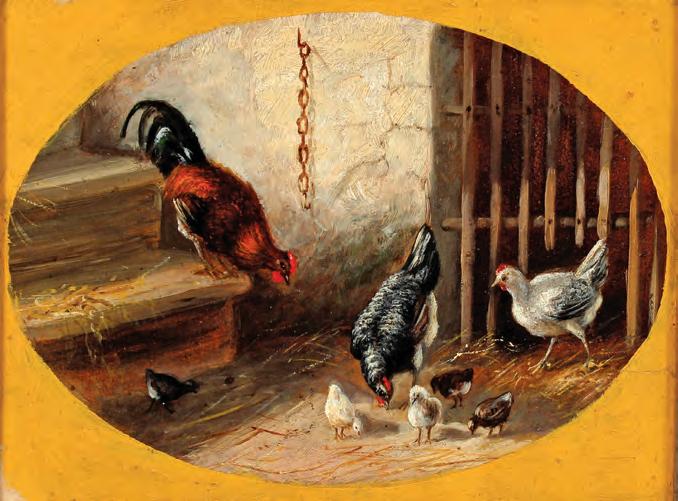
Figure 4. Caroline M. Clowes, Hens and chicks, n.d. Unsigned. Oil on board. The Dutchess County Historical Society, The Caroline M. Clowes Collection, Gift of Linda and E. Stuart Hubbard, 2019.
but kept in touch with Caroline Clowes for what appears to have been the rest of his life. In 1889, three years before his death, she wrote to Rondel seeking his sketching for a background of a “buff heifer.”14
Henry Van Ingen emigrated to the U.S. in the 1850s. He was recruited by Matthew Vassar to create and lead Vassar College’s Art School, which was eventually brought into the College as a department, and to establish an art museum. Van Ingen was highly regarded and served in that role until his death in 1898. He was the last of the original professors to pass away.
Van Ingen was known for leading students out of the classroom to sketch nature. Among the likely destinations was Heartsease, where Caroline had her studio. In one note to her he writes, “I promised some young ladies, (my most advanced pupils) to introduce them to Miss Clowes the artist, when they would have an opportunity to see some of her work, also.” In 1878, he ensured that the Art Museum acquired a painting of hers, called “Contentment;” it shows a white calf resting comfortably in the shade of a tree. In one of the best descriptions of the magic Clowes achieves in depicting animals, the “Vassar Miscellany” applauds what may sound contradictory, “...those transparently solid flesh tints!”16
The Style of Caroline M. Clowes
At a time when interest in the Hudson River School, a uniquely American School, was declining in favor of European styles and subjects, Caroline Clowes embraced the concept of local Hudson Valley landscape painting, making it unique by focusing, close up, on animals. As a bonus to those interested specifically in the history of Dutchess County, we are delighted that she focused on the local farmscapes around her. Subjects include her cousin Ambrose’s horse, “Buckskin” brought back from the South after the Civil War. She depicted the prized, “fattened steer” of her neighbor, George Ayrault. She painted, “Two cows near Wappinger Creek” in 1882 as a wedding present to her cousin (Figure 5), Louisa A. Hart. One painting is described as “near the Degarmo farm.”
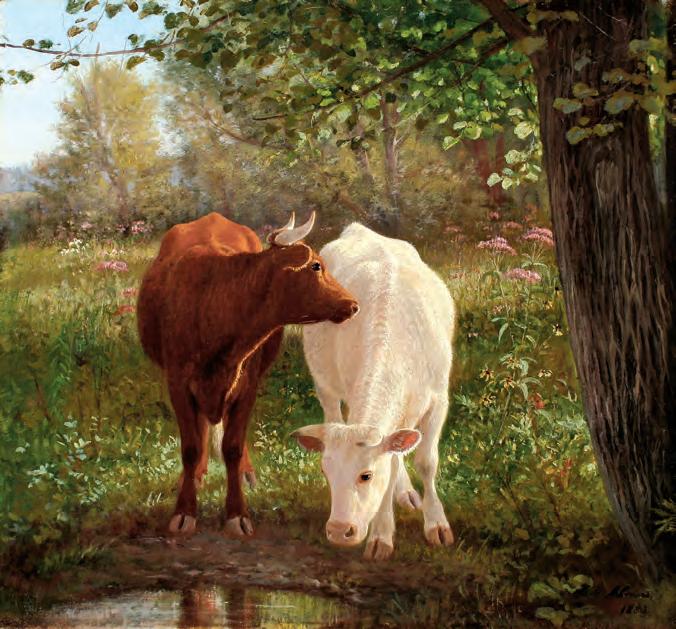
Figure 5. Caroline M. Clowes, Two Cows at Wappingers Creek, titled by the artist, signed “C.M. Clowes, 1882.” The Dutchess County Historical Society, The Caroline M. Clowes Collection, Gift of Linda and E. Stuart Hubbard, 2019.
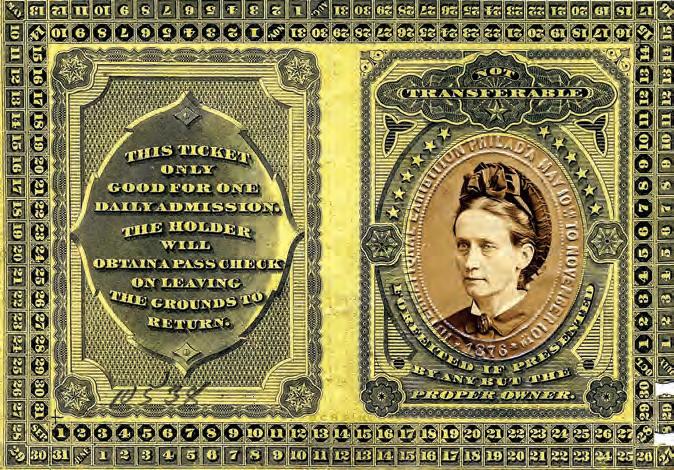

Figure 6. Exhibition Pass for 1876 Centennial Exhibition in Philadelphia. Pass issued to Caroline M. Clowes with her image reproduced from a portrait photograph.
Figure 7. Gallery C at 1876 Centennial Exhibition in Philadelphia. Stereograph, Centennial Photographic Company, 1876 The Free Libribrary of Philadelphia with annotations and edited to show location of Clowes painting, Cattle at the Brook.

The Philadelphia 1876 Centennial Exhibition
Between May and November, 1876, more than 10 million people attended the Centennial International Exhibition in Philadelphia17, marking the 100th anniversary of the birth of the United States. Featuring all aspects of the best of America, art was displayed prominently. In a letter to Caroline in advance of the Exhibition, Poughkeepsie’s Helen Hooker Stuyvesant Sanford wrote that she was appointed to manage matters related to local contributions. Reflecting, perhaps, what Caroline’s achievements meant to many women at the time, she wrote, “As a woman I am so proud of your beautiful animals that I wish so much to have all the world see what a woman can do. I write to know if you will not send on a picture for the women’s department at Philadelphia?”18
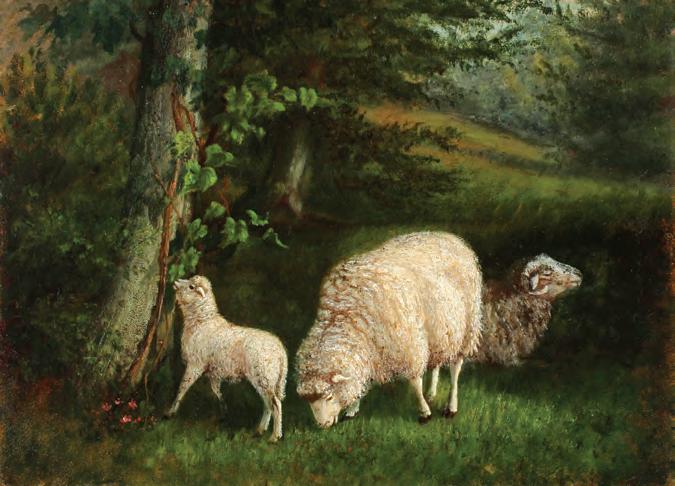
Figure 8. Caroline M. Clowes, Sheep in the Forest, n.d. Unsigned. The Dutchess County Historical Society, The Caroline M. Clowes Collection, Gift of Linda and E. Stuart Hubbard, 2019.
What Mrs. Stanford did not know, was that plans were already well under way to feature “Cattle at the Brook,” not in the women’s department, but in the main gallery. And within the main gallery, the painting would be featured in the most coveted gallery, “Gallery C,” among the greats, America’s best known male painters like Bierstadt, Kensett and Cole.19 While some complained that Caroline’s painting was “skied” (hung too high, in the fashion of the time of having paintings run nearly floorto-ceiling), she must have taken some satisfaction in the achievement of what had been only a dream and a set of drawing books on Christmas Day at Heartsease 25 years earlier.
Conclusion
We don’t know what the trajectory of Caroline’s professional and personal life would have been had she relocated elsewhere. But in Dutchess County, the 13-year old Caroline found progressive thinking toward the education of women, a family with skilled women artists, encouragement of self-discovery and realization from the family's men and women within the four walls and farm affectionately called Heartsease, a vibrant intellectual community at the new Vassar College, and plenty of sheep, chickens, cows, horses, and farmscapes and landscapes to inspire her.
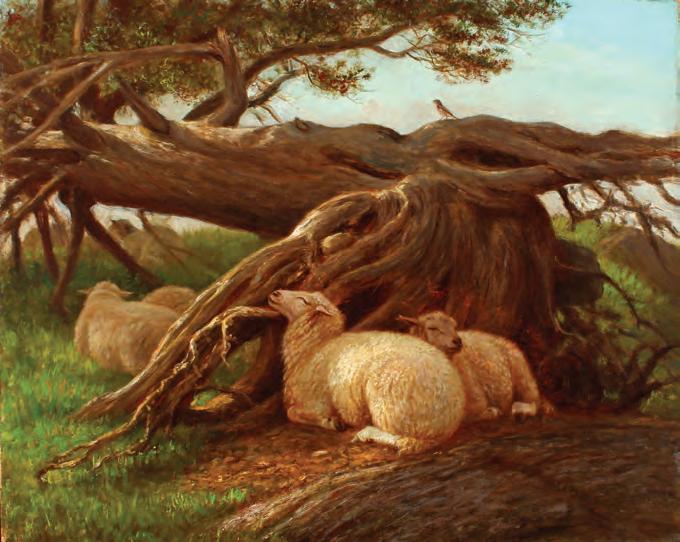
Figure 9. Caroline M. Clowes, Evensong titled by the artist, n.d. (c. 1880s. Understood to be one of Miss Clowes’ last paintings.) Oil painting. The Dutchess County Historical Society, The Caroline M. Clowes Collection, Gift of Linda and E. Stuart Hubbard, 2019.
1 Textual record. The Hart Hubbard Collection, Dutchess County Historical
Society, Poughkeepsie, NY. 2 Lydia M. Clowes’ letter to Caroline M Clowes (May 3, 1859), Textual record,
Hart Hubbard Collection, Dutchess County Historical Society, Poughkeepsie, NY. 3 Elizabeth H. Clowes’ letters to Lydia M. Clowes, Caroline M. Clowes, and
Ellen L. Clowes" (Dec. 21, 1840), Textual records, Hart Hubbard Collection,
Dutchess County Historical Society, Poughkeepsie, NY. 4 Textual record, Hart Hubbard Collection, Dutchess County Historical Society,
Poughkeepsie, NY 5 Lydia M. Clowes’ letter to Caroline M Clowes (Dec. 3, 1854), Textual record,
Hart Hubbard Collection, Dutchess County Historical Society, Poughkeepsie, NY.
6 Wm. J. Clowes, “‘Apographean Numbers,’ Letter to the Editor,” The Port Jervis
Evening Gazette (Oct. 17, 1876). 7 Edmund Platt, History of Poughkeepsie From the Earliest Settlements 1683 to 1905 (Poughkeepsie: Platt & Platt, 1905), pp. 125, 254. 8 “La Grange, Dutchess, New York,” 1860 US Federal Census, p. 698. 9 Caroline M. Clowes’ letter to Lydia M. Clowes (Jan. 8, 1852), Textual record,
Hart Hubbard Collection, Dutchess County Historical Society, Poughkeepsie, NY. 10 Lydia M. Clowes and Elizabeth H. Coleman’s letter to Caroline M. Clowes (May 2, 1853), Textual record, Hart Hubbard Collection, Dutchess County
Historical Society, Poughkeepsie, NY. 11 Lydia M. Clowes’ letter to Caroline M. Clowes (April 2, 1854), Textual record,
Hart Hubbard Collection, Dutchess County Historical Society, Poughkeepsie, NY. 12 Lydia M. Clowes’ letter to Caroline M. Clowes" (April 17, 1856), Textual record, Hart Hubbard Collection, Dutchess County Historical Society,
Poughkeepsie, NY. 13 Rondel letters. 14 Textual record. The Hart Hubbard Collection, Dutchess County Historical
Society, Poughkeepsie, NY. 15 HenryVan Ingen Biographical File, Special Collections, Vassar College Library, Poughkeepsie, NY. 16 Vassar Miscellany (November 1878). 17 Linda P. Gross and Theresa R. Snyder, Philadelphia’s 1876 Centennial Exhibition (Charleston, SC: Arcadia Publishing, 2005), pp. 7-8. 18 Helen Sanford’s letter to Caroline M. Clowes (May 10, 1876), Textual record,
Hart Hubbard Collection, Dutchess County Historical Society, Poughkeepsie, NY. 19 United States Centennial Commission, International Exhibition 1876 Official
Catalogue, (Philadelphia, Pennsylvania: J.R. Nagle and Co, 1876).








